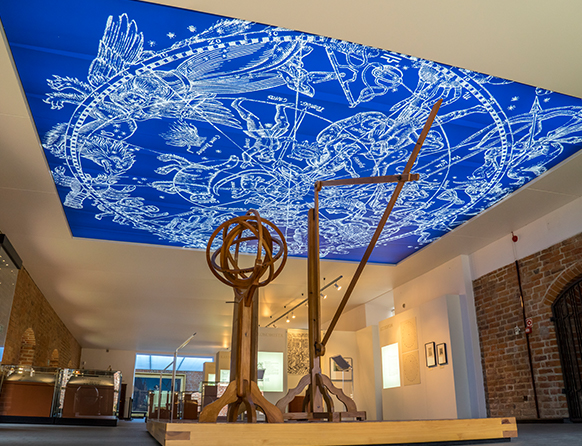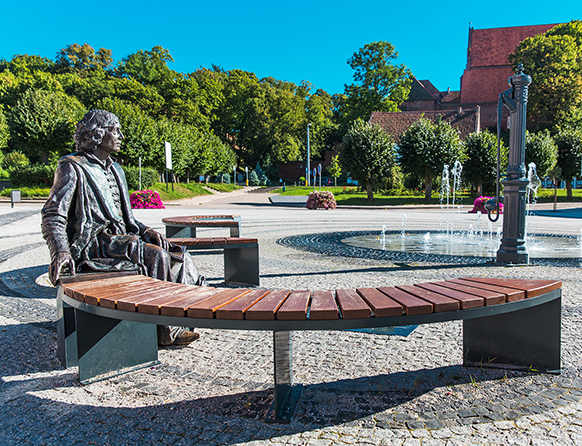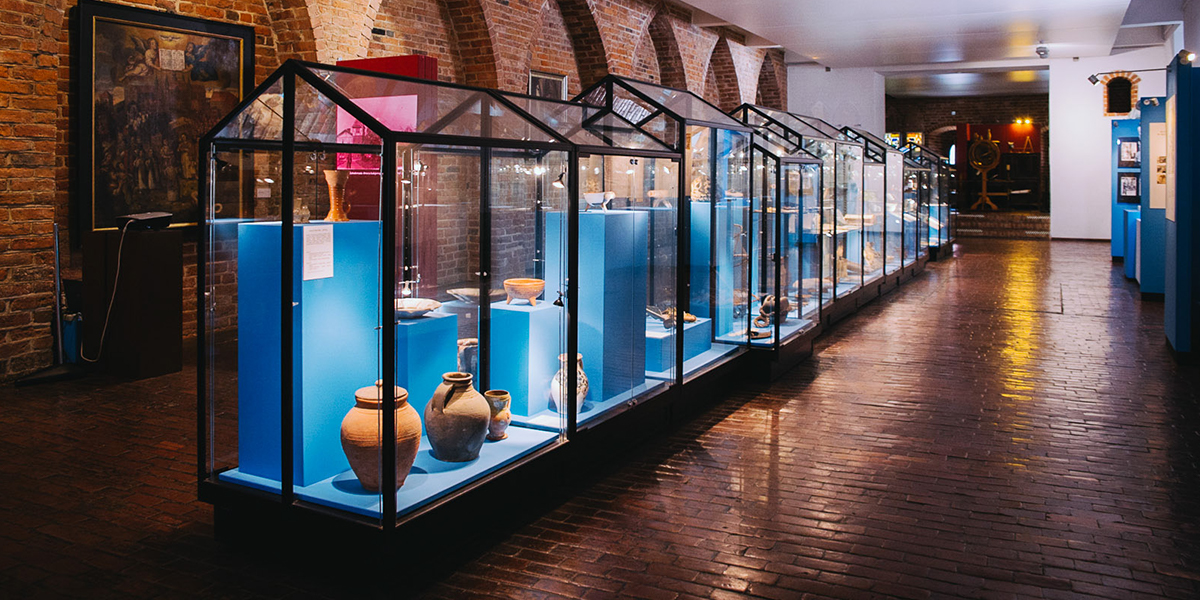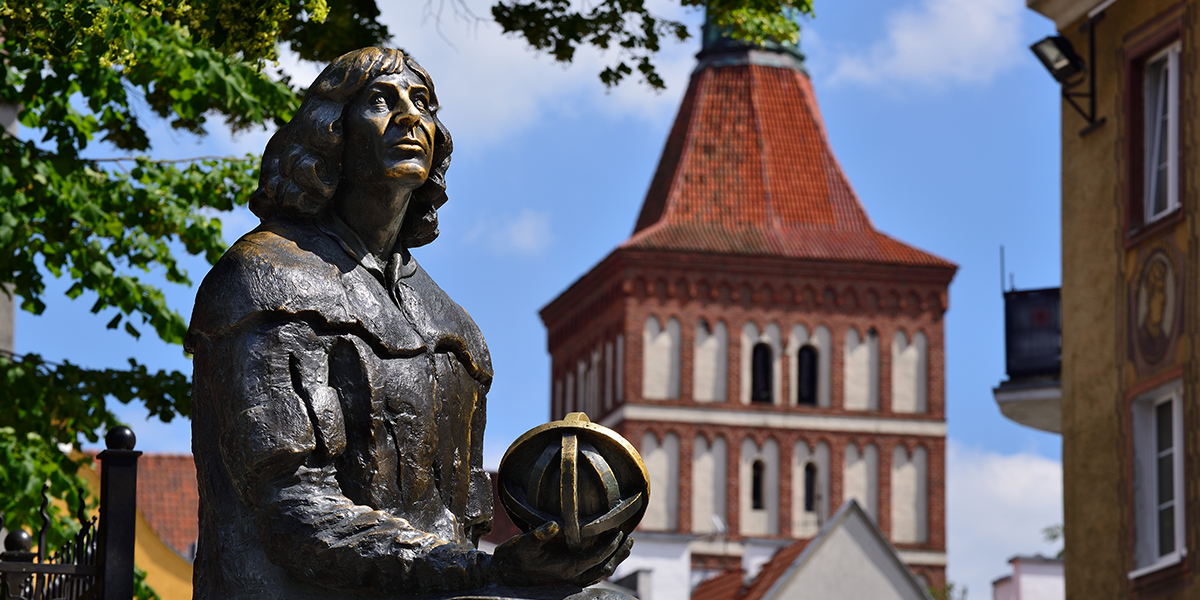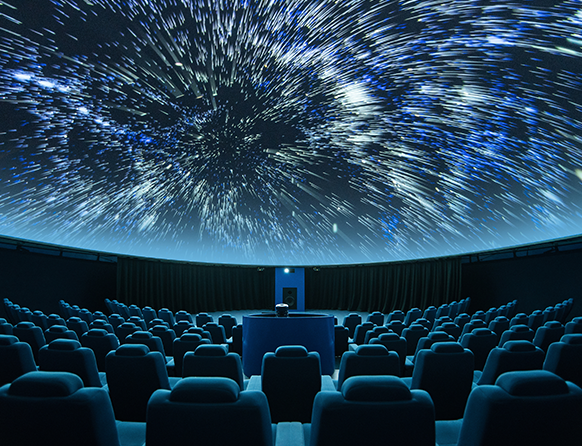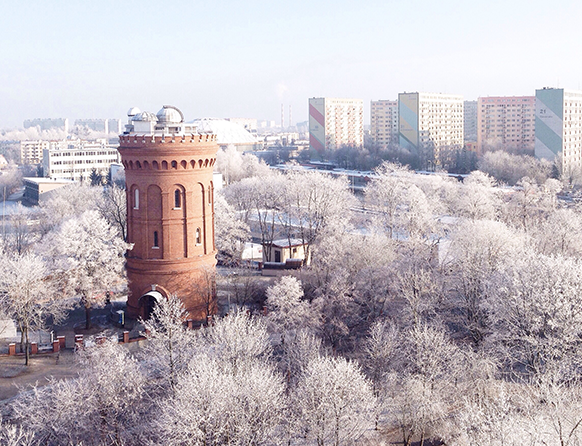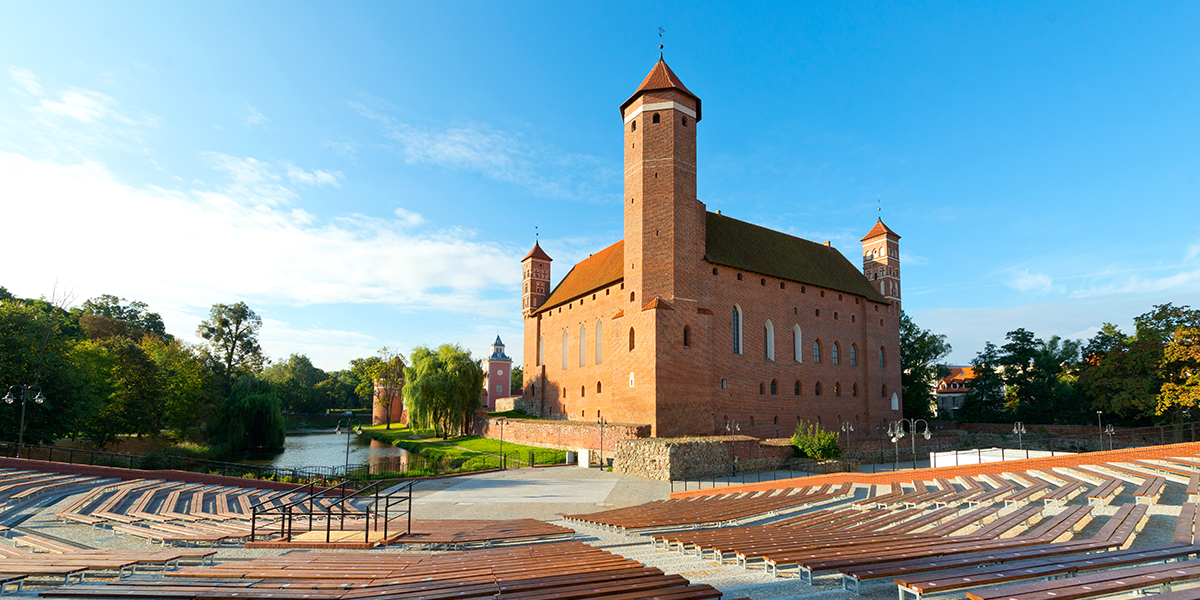On the trail with Copernicus – the places where the great astronomer lived and worked
This trail leads through unique places. It’s nearly 300 km of exciting journey in the footsteps of great discoveries that have changed the perception of the universe forever. In Warmia, Copernicus spent 40 years of his life as a canon of the Warmian Chapter, and regardless of that he observed the sky, worked on the heliocentric theory and wrote down his work.
The Copernicus Trail in Warmia and Masuria leads through the following towns: Elbląg, Tolkmicko, Frombork, Braniewo, Pieniężno, Orneta, Lidzbark Warmiński, Dobre Miasto, Olsztyn, Olsztynek, Lubawa and Nowe Miasto Lubawskie. No matter where you start your journey from, be ready for great discoveries.
Frombork
“A distant corner of the Earth,” that’s what the prominent astronomer wrote about Warmia. In Frombork, Copernicus held important functions on behalf of the Warmia Cathedral Chapter and the bishops: Chancellor and visitor of the Chapter’s property, Commissioner of Warmia, general administrator of the bishopric (1510-1543). It was here that the most famous work of the scholar, “On the Revolutions”, was created. A further part of the title known as “On the Revolutions of the Heavenly Spheres” was added with an introduction without the permission of Copernicus by a publisher from Nuremberg.
Wzgórze katedralne (Cathedral Hill) – Nicolaus Copernicus Museum
The main exhibition rooms of the museum are located in the former bishop’s palace, also known as Ferber’s palace. We can move here in time and get to know many interesting facts about the scientist.
Wzgórze katedralne – the cathedral
Under the cathedral floor are the mortal remains of the astronomer. The tombstone of Copernicus was placed at the altar of the Holy Cross, which the scientist took care of during his lifetime. The cathedral is one of the largest and most important temples in Warmia, with one of the most famous Baroque organs in the country and a polyptych with the Madonna of the Apocalypse.
Wzgórze Katedralne – Radziejowski Tower
In the former cathedral bell tower there is a planetarium and a viewing terrace, as well as a Foucault pendulum. This device proves the astronomer’s theory, showing that the Earth not only circulates around the Sun, but also revolves around its own axis.
Holy Spirit Hospital
Nicolaus Copernicus was a Renaissance man. In the hospital, which was run by the chapter, he served as a doctor, he watched over the health of canons, bishops, princely courtiers and other important personalities. Currently, the hospital’s complex includes the Medical History Department of the Nicolaus Copernicus Museum.
Astronomical Park
Located 2 km from Frombork, on a hill called Żurawia Góra (Crane Mountain), it is an ideal place for conducting nocturnal observations. Currently the Astronomical Park has seven pavilions for sky observation and three viewing terraces. This place will appeal not only to astronomy lovers.
Olsztyn
Nicolaus Copernicus was undoubtedly the most famous inhabitant of Olsztyn Castle (in the years 1516-19 and 1520-21). He was the administrator of the Warmia Chapter property. It is necessary to mention that the astronomer was responsible for the defence of Olsztyn against the attack of the Teutonic Knights, which took place in January 1521.
The castle houses the Museum of Warmia and Masuria and the world’s only unique memento of Copernicus. It is an experimental astronomical plaque made on the wall of the cloister. This plaque allowed to determine the apparent movement of the Sun in the days close to the spring and autumn equinoxes and was combined with a kind of sundial form.
Planetarium
The Olsztyn planetarium is one of the largest facilities of its kind in Poland. It was opened in 1973 to celebrate the 500th anniversary of Nicolaus Copernicus’ birth.
Astronomical Observatory
The former water tower was adapted for an observatory. On clear days you can see spots on the Sun through telescopes, and on cloudless evenings craters on the Moon, stars and the brightest moons of Jupiter.
Apart from the main towns on the trail, it is also worth visiting the villages where Copernicus carried out peasant settlements, being the administrator of the Warmia Chapter estate.
Lidzbark Warmiński
In Lidzbark Warmiński, Copernicus was a doctor and secretary to his uncle Bishop Lucas Watzenrode the Younger. For eight years (1503-1510) he lived in the castle of Warmia bishops. It was here that the “Little Commentary” was created, in which he outlined his heliocentric theory.
Recommended

Fishing only in Masuria
Fish on holiday is a classic. It has to be fresh and taste. In the Land of the Great Masurian Lakes there are plenty of fish, one could say that Warmia and Masuria is a land flowing with fish. So we set off onto the trail of places where they serve fresh, delicious and aromatic fish. We also chose regional dishes made of fish, which one cannot find by the sea.
Find out more
Culinary Heritage Network Warmia Masuria Powiśle
Drawing on the culinary traditions of Warmia, Masuria and Powiśle, based on the high quality of local products - such are the products and services that the Culinary Heritage Network "Warmia Masuria Powiśle" gathers.
Find out more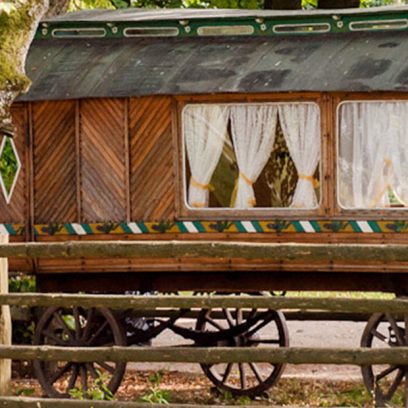
The climate of small towns - 4 local museums in Cittaslow towns
In the era of hustle and bustle, a movement spreading ideas different from those imposed by the modern world was born.
Find out more
